Why We Choose Heirloom Seeds

So I read this book recently, for which I plan to post a full review soon. The topic is seed saving and it has shown me yet another example of the destruction that is done when something fundamentally agrarian is turned industrial.
And this time it’s not just a matter of comfort, but rather a matter of life of the most fundamental and hopeful kind – the life within a seed.
Before I go into the whole nine yards of the book review I thought it might be helpful to get into the nitty-gritty of the different types of seed one can purchase. If you’ve gardened and purchased seeds then you’ve probably heard terms like hybrid, GMO, open-pollinated, heirloom, and organic.
And right about now you might be thumbing through those pretty catalogs about to place an order for the newest, biggest yielding, most profitable variety of lettuce ever to hit the market. I urge you to stop and consider the source of that seed before they get you with the sparkly and lucrative promises that usually accompany a highly industrialized seed breeding process.
Several years ago, when we first started gardening, I really didn’t understand what hybridized, genetically modified, and heirloom meant. I pretty much always fall back on the philosophy that the oldways are better, so we chose heirloom seeds over hybridized ones. And after a lovely early spring crop of lettuce we let a couple of plants go to seed, and simply took those seeds and planted them in a shady area for a beautiful summer lettuce crop.
And thus a passion and awe for seed saving was born. Sure enough, our "oldways theory" held true once again.
So I thought I’d share with you my understanding, as a non-expert, of the different types of seed. I’d love to hear your understandings in the comments as well.
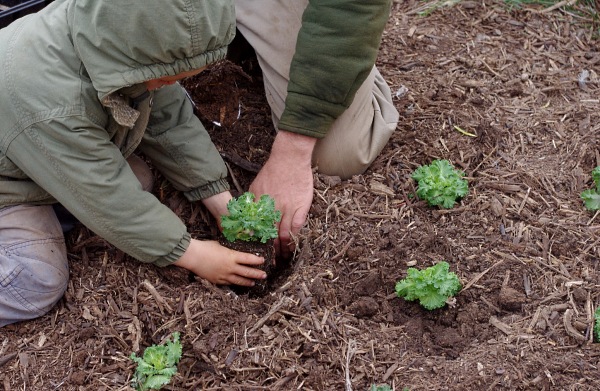
Heirloom
Their are several attributes of an heirloom vegetable, fruit, or flower that are important to me in terms of health and sustainability:
- Most come from before World War II and the "Green Revolution" which was not so green after all.
- They were generally retrieved the old fashioned way. You know, they got seeds from their grandmother because those beans grew really well here and tasted mighty fine. The plant was then grown and seed saved from it to pass on to others.
- They were not manipulated in a man-made environment through forced plant breeding or genetic modification.
- Because of that they can be grown and seed can be saved from the plant for the next year’s planting.
- These are not frequently patented or "owned" by any seed company who wants to sue the pants off of you if they ever catch their genetic material on your property.
Theoretically, this means that if you buy heirloom seeds once, and can successfully grow them to fruit and then seed, you may never need to buy seeds again. Yes, please.
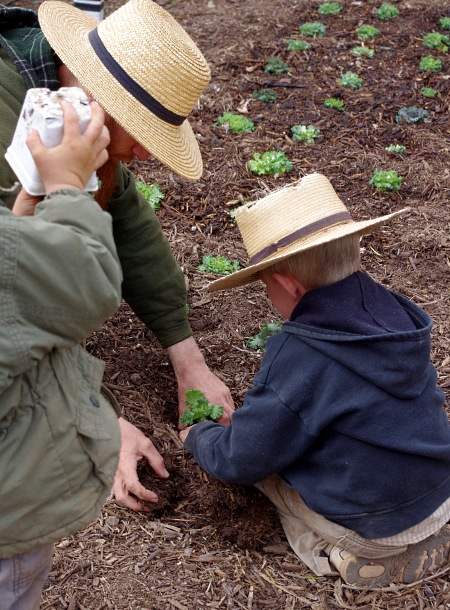
Hybrid
These guys seem to have really taken off in the 50s. Plant hybridization seems to usually be done in the hopes that good traits from one variety can be combined with good traits from another variety into one single variety. It’s the natural process of plant-breeding sped up, and like most things that are forced it has consequences.
If you grow a hybrid you might have good resistance to disease X and good resistance to pest Y. So you are pleased with the fruit and decide to save the seeds so that next year you can have both of those qualities again. Seems reasonable, right?
But because the natural process was forced and the plant was not given time to sort of equalize, the seeds you harvest will revert back to one of the two parent plants. That is, you will not be growing the same plant with the same traits if you harvest seed from a hybridized plant and attempt to grow it again.
In short, you are forced to go back to that seed company and purchase the seed if you wish to grow that plant again. Which is why most large seed companies – Monsant and Syngenta – and their subsidiaries sell a lot of hybrids. You think they’re shiny and wonderful because of all of the promises and fancy traits and they think you’re wonderful because you keep coming back and spending your money buying their seed.

Genetically Modified Organism
Read those two words slowly… genetic (as in genes, DNA, building blocks of life) modified (as in changed or altered). Just think about that for a second.
Someone, somewhere has decided a plant isn’t good enough for the bigger, faster, quicker, filthy lucre economy. And since they’re so smart they are going to manipulate the genome of that plant through slicing, dicing, or, ya know, adding DNA of other plants or animals or microorganisms to the naturally occurring DNA. And suddenly you have the plant of your dreams.
Except it is patented, meaning you can never save the seed and must always buy next year’s seed from the company. Oh, and it has only been around for the past forty years and America is now one giant lab experiment to test whether or not the obliteration of the natural DNA in a plant is safe for human consumption.
WHAT?!

Avoiding Cross Pollination with GMOs
Oh and it gets better, folks. So these very large seed corporations have patented as much seed as they can get their hands on. They profit from this in two ways:
- The farmer is legally bound not to save his own seed for himself or anyone else. That age-old practice of swapping seeds with your neighbor when a corn cob is especially tasty and vigorous? Forget it. Saving seed this year so that next year you don’t have to buy more? Not unless you want them to sue you all the way down to the underpants.
- The natural process of pollination occurs when pollen from one plant pollinates another plant. If the two plants happen to be of different varieties then you have cross-pollination. This happens in nature all of the time, right? But if that pollen happens to be of the genetically modified variety and cross-pollinates with your carefully selected heirloom vegetable garden then you, my friend, now have genetically modified vegetables.
.jpg)
Yummy. Even yummier when you try to save seed without a clue as to the GMO-ness of your tomato and perpetuate the cycle. Oh, and don’t forget about the sued down to your underpants possibility.
Which is why I can’t emphasize enough how important it is to seek out non-GMO, non-hybridized, non-patented, non-sue-you-down-to-your-underpants seed. And if you like to purchase seedlings then make sure you know the source of the seeds.
To avoid cross-pollination with GMOs take a look at this plant isolation distance chart. (Note that the Ashworth figures are geared towards home gardeners while the USDA figures are for the large-scale farmer.)
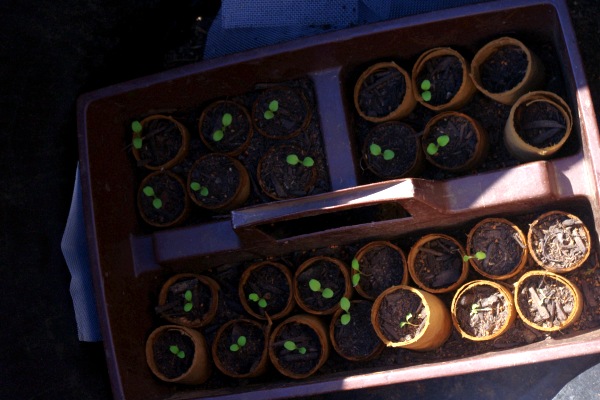
You will notice that in order to insure no cross-pollination there is often a necessary distance of miles between plants. So, if you desire to grow heirloom vegetables true to type, avoid modern plant manipulation, and repeat the sustainable practice of seed saving, then you might also want to share those heirloom seeds with your neighbors.
Because sometimes being neighborly means not letting someone eat cabbage that has "the gene that programs poison in scorpion tails" worked into its DNA.
That’s my understanding of seed choices. What’s yours?

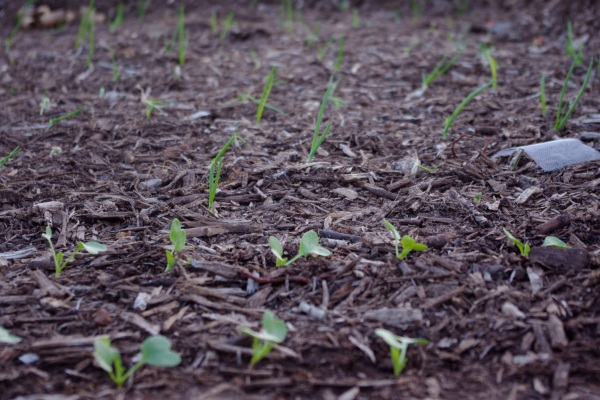
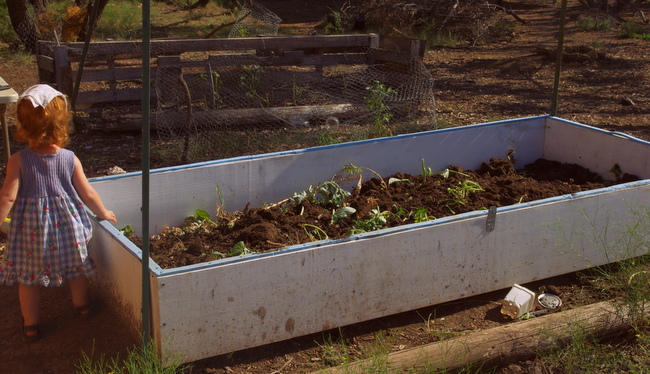
Thank you for this quick overview.
It was helpful in telling my children
About the different seed types.
This year, each of my children
Picked out their very own seeds
That they wanted to plant for the
Family (their very own contribution),
Which they will be responsible for
Taking care of. Anyways, they
Wanted to know the difference between
The kinds of seeds, and they
Wanted to be able to plant seeds
From this years veggies/fruit
Next year.
Thank you again.
Do you have a favorite Heirloom seed company you buy from (to get started?)
Thanks!
Lindsey – This year we ordered many of our seeds from Southern Exposure Seeds (I think :)). The other companies we’ve happily ordered from are Baker Creek and High Mowing Seeds. In the north names like Fedco and Territorial come to mind. Not all seed companies that carry heirlooms are exclusively heirloom, though, so I try just do a bit of research and look at the descriptions closely.
You are right on in your explanation of the different types of seeds. Thank you for making it so simple. I am looking forward to the review of the seed saving book. I think I will plant heirloom seeds this year!
Wow, I knew I wanted heirlooms before and you solidified it now. Great post!
This is a great post, very helpful. I really enjoy reading your posts and I wanted to say thank you for the encouragement you offer. Blessings.
Because I have a small garden and maintaining genetic diversity requires a number of plants, I don’t seed save. However, I do try to buy heirlooms because keeping heirloom seed companies in business is everyones interest as it helps maintain diverse breeds.
I couldn’t have said it better myself, which is why I linked your post to the new seed business I’m starting at my local farmers market. Please visit my Facebook page https://www.facebook.com/pages/Earthangel-Seeds-and-Garden-Supply/ and like me!
Actually, it is my understanding that we CAN propagate patented plant BY SEED, but NOT from cutting.